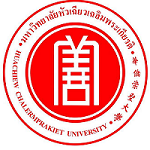Please use this identifier to cite or link to this item:
https://has.hcu.ac.th/jspui/handle/123456789/4020| Title: | การตรวจหาสารฟอกขาวและเชื้อ Escherichia coli ในถั่วงอกจากตลาดในเขตอําเภอบางพลี จังหวัดสมุุทรปราการ |
| Other Titles: | Detection of Sodium Hydrosulfite and Escherichia Coli Contaminated in Bean Sprout from the Market in Bang Phli District |
| Authors: | กนกกาญจน์ ศรจันทร์ ชนิกานต์ วิริยะดิลก อัญชลี ชุ่มบัวทอง รุจิราลัย พูลทวี อมรรัตน์ โตทองหล่อ บังอร ฉางทรัพย์ ชัชวาลย์ ช่างทำ Kanokkarn Sonjan Chanikan Wiriyadilok Anchalee Choombuathong Rujiralai Poontawee Amornrat Tothonglor Bangon Changsap Chatchawan Changtam Huachiew Chalermprakiet University. Faculty of Science and Technology Huachiew Chalermprakiet University. Faculty of Science and Technology Huachiew Chalermprakiet University. Faculty of Science and Technology Huachiew Chalermprakiet University. Faculty of Science and Technology Huachiew Chalermprakiet University. Faculty of Science and Technology Huachiew Chalermprakiet University. Faculty of Science and Technology Huachiew Chalermprakiet University. Faculty of Science and Technology Huachiew Chalermprakiet University. Faculty of Social Work and Social Welfare |
| Keywords: | ถั่วงอก Bean Sprout สารฟอกขาว โซเดียมโฮโดรซัลไฟต์ Sodium Hydrosulfite การปนเปื้อนของจุลินทรีย์ Microbial contamination ตลาด – ไทย – สมุทรปราการ Markets – Thailand – Samut Prakan เอสเคอริเคียโคไล Escherichia coli ต้นอ่อน |
| Issue Date: | 2025 |
| Citation: | Chonburi Hospital Journal 50, 1 (January-April 2025) : 19-26. |
| Abstract: | ถั่วงอกหรืือต้้นอ่อนระยะเริ่มงอกของเมล็็ดถั่วเขียว เป็นผักที่ีมีคุุณค่าทางอาหาร มีโปรตีน วิตามินบีี วิตามินซีี เส้้นใยอาหารเกลือแร่ และแคลอรี่ต่ำ ซึ่งคนส่วนใหญ่่นิยมนํามารับประทานแบบดิบหรืือเป็นเครื่องเคียงรับประทานร่วมกับอาหาร อาจมีการปนเปื้อนของสารฟอกขาวที่ีผู้ผลิตต้้องการให้ถั่วงอกมีสีขาว สดใหม่อยู่เสมอ และมีรายงานว่าอาจปนเปื้อนเชื้ือจุลินทรีย์ก่อโรค เช่น Escherichia coli ซึ่งเป็นแบคที่ีเรียแกรมลบ รูปร่างเป็นแท่งสั้น ไม่สร้างสปอร์ มีแหล่งอาศัยในลำไส้้ใหญ่่ของคนและสัตว์เลือดอุ่น จึงถูกใช้เป็นดัชนีการปนเปื้อนจากอุจจาระ จากประกาศของกระทรวงสาธารณสุขปี พ.ศ. 2561 เรื่องวัตถุเจือปนอาหาร กําหนดให้ใช้สารฟอกขาวกลุ่มซัลไฟต์ในอาหารบีางชนิดในปริมาณที่ีกําหนด ส่วนสารโซเดียมโฮโดรซัลไฟต์ห้ามใช้ในอาหาร และประกาศของกรมวิทยาศาสตร์การแพทย์ เรื่อง เกณฑ์์คุุณภาพทางจุลชีววิทยาของอาหารและภาชนะสัมผัสอาหาร ฉบับที่ี 3 ปี พ.ศ. 2560 กําหนดให้ อาหารพร้อมบริโภค ประเภทอาหารดิบหรืืออาหารที่ีมีอาหารดิบเป็นส่วนประกอบซึ่งเตรียมหรืือปรุงในสภาพบริโภคได้ทันที ปริมาณที่ีคาดว่าสามารถพบเชื้ือ E. coli ต้้องน้อยกว่า 100 MPN/g การวิจัยนี้จึงมีวัตถุประสงค์เพื่อตรวจหาโซเดียมไฮโดรซัลไฟต์และตรวจหาเชื้ือ E. coli ที่ีปนเปื้อนในถั่วงอก จากตลาดในเขตอําเภอบางพลี จังหวัดสมุทรปราการ ทั้งหมด 30 ตัวอย่าง ตรวจหาสารฟอกขาวโดยใช้ชุดทดสอบโซเดียมไฮโดรซัลไฟต์ และตรวจหาเชื้ือแบคทีเรียโคลิฟอร์มและเชื้ือ E. coli โดยวิธีมาตรฐานของ Bacteriological Analytical Manual (BAM) ปี 2020 โดยใช้วิธีการหาค่า MPN/g ระบบ 3 หลอด ผลการทดลองพบว่าไม่พบสารโซเดียมไฮโดรซัลไฟต์ปนเปื้อนในถั่วงอกทั้งหมดที่ีเป็นกลุ่มตัวอย่าง และการตรวจหาเชื้ือแบคทีีเรียโคลิฟอร์มในถั่วงอก พบว่าการตรวจหาเชื้ือ E. coli พบว่าค่า MPN ของ E. coli มี ค่าอยู่ระหว่าง < 3.0 ถึง 23 MPN/g ซึ่งอยู่ในเกณฑ์์มาตรฐานที่ีกําหนดคือ E. coli น้อยกว่า 100 MPN/g จึงมีความปลอดภัยและบริโภคได้ Bean sprouts are the sprouts of mung bean seeds. It is a nutritious vegetable, containing protein, B vitamins, vitamin C, dietary fiber, mineral salt and low calories. Most people like to eat fresh or as a side dish to eat with food. There may be contaminated with bleach because manufacturers want the sprouts to be white and always fresh. Furthermore, it has been reported that it can also be contaminate with pathogenic microorganisms Escherichia coli (E. coli), a Gram-negative bacterium, have a short rod shaped and non-spore. E. coli live in intestine of homoeothermic animal and humans. E. coli has been regarded as a biological indicator of fecal contamination. Therefore, it was used as an index of fecal contamination from the announcement of the Ministry of Public Health in 2018 on food additives prescribed to use sulfite bleach is required in certain foods in limited quantities, while sodium hydrosulfite is prohibited in foods. E. coli contaminated in ready-to-eat fresh vegetables must less than 100 MPN/g which informed to notification of announcement of the Department of medical sciences on the microbiological quality criteria of food and food contact containers, No. 3, in 2017 The objective of this study was to detect sodium hydrosulfite and detect E. coli contaminants in bean sprouts from the Market in Bang Phli District, Samut Prakan Province. Thirty samples were tested for bleach using a sodium hydrosulfite test kit and detect coliform bacteria and E. coli by standard methods of Bacteriological Analytical Manual (BAM) 2020 using the method for determining MPN/g, 3 tubes system. The results of the experiment revealed that no sodium hydrosulfite contamination was found in all the bean sprouts of the sample. The range of E. coli contaminants is between less than < 3.0 ถั่่ง 23 MPN/g which is within the specified standard of E. coli less than 100 MPN/g. Therefore, the bean sprouts in Bang Phli District markets can be safe for consumption. |
| Description: | สามารถเข้าถึงบทความฉบับเต็ม (Full Text) ได้ที่ : https://thaidj.org/index.php/CHJ/article/view/15430/12940 |
| URI: | https://has.hcu.ac.th/jspui/handle/123456789/4020 |
| Appears in Collections: | Science and Technology - Articles Journals |
Files in This Item:
| File | Description | Size | Format | |
|---|---|---|---|---|
| Detection-of-Sodium-Hydrosulfite-and-Escherichia-Coli-Contaminated-in-Bean-Sprout.pdf Restricted Access | 94 kB | Adobe PDF | View/Open Request a copy |
Items in DSpace are protected by copyright, with all rights reserved, unless otherwise indicated.
